Buying Guide for the Best Massage Tables
Choosing the right massage table is crucial for both the comfort of the client and the ease of the therapist. A well-chosen table can enhance the massage experience, improve client satisfaction, and ensure the therapist's well-being by providing the right support and adjustability. When selecting a massage table, consider the type of massages you will be performing, the space you have available, and the portability you require. It's important to balance comfort, durability, and functionality to find the best fit for your needs.Table WidthThe width of a massage table affects both the comfort of the client and the accessibility for the therapist. A standard width ranges from 28 to 32 inches. Narrower tables (around 28 inches) are easier for the therapist to reach across, making them ideal for shorter therapists or those who perform a lot of deep tissue work. Wider tables (up to 32 inches) provide more comfort for larger clients but may require the therapist to stretch more. Consider your own reach and the size of your typical clients when choosing the width.
Table LengthTable length is important for accommodating clients of different heights. Most tables are around 73 inches long, which is suitable for most clients. However, if you frequently work with taller clients, you might consider a table with an adjustable face cradle or an extended length option. Ensure the table length, including any extensions, fits comfortably in your workspace.
Table HeightAdjustable height is crucial for the therapist's comfort and ergonomics. Most tables offer a height range from about 23 to 33 inches. A table that is too high or too low can cause strain on the therapist's back and shoulders. Consider your own height and the types of massages you perform when selecting the height range. Ideally, the table should be at a height where you can work comfortably without bending or reaching excessively.
Weight CapacityThe weight capacity of a massage table indicates how much weight it can safely support, including the client and any additional pressure applied during the massage. Most tables support between 400 to 600 pounds. If you work with larger clients or apply significant pressure during treatments, opt for a table with a higher weight capacity to ensure safety and durability.
PortabilityPortability is a key consideration if you plan to travel with your massage table. Portable tables are typically lighter and foldable, making them easier to transport. Look for tables that weigh between 25 to 40 pounds for easy carrying. If you have a fixed location, a heavier, more stable table might be preferable. Consider how often you will need to move the table and choose a model that balances weight with stability.
Padding and UpholsteryThe padding and upholstery of a massage table affect the comfort and durability of the table. High-density foam padding, typically between 2 to 3 inches thick, provides a comfortable surface for clients. Upholstery should be durable, easy to clean, and resistant to oils and stains. Vinyl is a common choice for its durability and ease of maintenance. Consider the types of treatments you offer and the level of comfort you want to provide when selecting padding and upholstery.
Frame MaterialThe frame material of a massage table affects its weight, durability, and stability. Common materials include wood and aluminum. Wooden frames are often heavier and provide a classic look, while aluminum frames are lighter and more portable. Consider the balance between portability and stability when choosing the frame material. If you need a table that is easy to move, aluminum might be the better choice, whereas wood may offer more stability for a stationary setup.
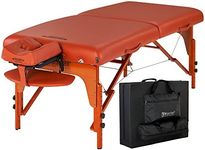
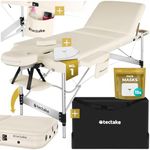



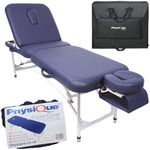
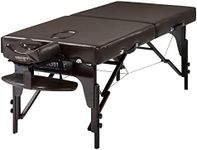



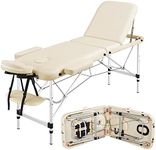



![Earthworks Perform MASSAGE TABLE with Lifting Backrest: Lightweight at Only 15.8kg, 28" Wide [Navy]](https://images-proxy.bestreviews.guide/zIu8P4sgzZuc-6dh6DtlGCvUWeE=/0x150/https://m.media-amazon.com/images/I/41-07MOEUUL._AC_CX679_.jpg)
